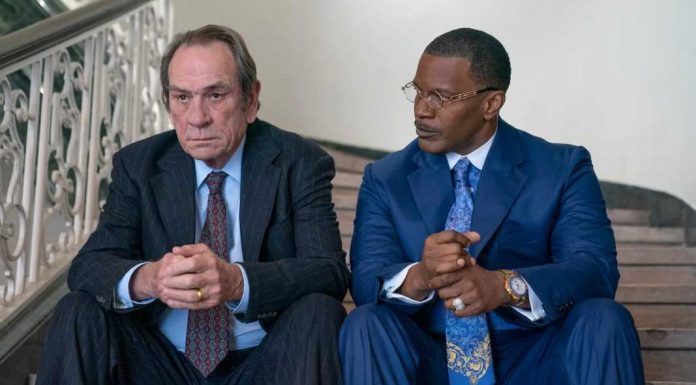Are you ready for a thrilling cinematic experience that delves deeply into the halls of justice and uncovers the dark side of the “death care” business? With a gripping blend of courtroom drama and a David-and-Goliath story, “The Burial” (2023) looks to deliver just that. It opens in cinemas on October 6 and is available for streaming on Prime Video starting on October 13. The film, directed by Maggie Betts, vividly depicts the compelling real-life tale of Tommy Lee Jones‘s tenacious funeral parlor owner Jeremiah “Jerry” O’Keefe. The film centers on a lawyer who defends a funeral home owner’s family business against a powerful corporation. Is “The Burial” based on true events, or is it solely a work of fiction? Let’s explore the facets of this captivating story.
Is The Burial (2023) Movie Based on a True Story?
Yes, “The Burial” (2023) is indeed based on a true story. The film is based on a true story of a 1995 court case that followed the story of Jeremiah O’Keefe, the proprietor of a funeral home in Mississippi, and Ray Loewen, a corporate behemoth that was quickly entering the funeral home industry.
Jerry O’Keefe was a real funeral home proprietor with a strong tie to the undertaking profession; he was not merely a fictional character created for the screen. In a January 1996 article, The New York Times provided a detailed account of O’Keefe’s life, including how he restored the house his family had lost during the Great Depression and turned it into a funeral home.
The dispute began when Ray Loewen, a Canadian businessman, and his organization, the Loewen Group, entered the market. Loewen’s company had a history of undercutting pricing in new areas, which resulted in the closure of local enterprises. According to O’Keefe, Loewen’s actions created a deceptive pattern that affected smaller, neighborhood family companies like O’Keefe’s and attempted to establish a multistate monopoly on the funeral home industry.
As shown in “The Burial,” the court case took several dramatic turns. Jamie Foxx portrays Willie E. Gary, who rises to prominence as O’Keefe’s legal representative. The movie faithfully depicts the true trial, emphasizing Gary’s nontraditional strategies and the dynamics of the courtroom that ultimately result in a historic decision.
Maggie Betts, the filmmaker, injected new life into the decades-old screenplay by taking creative liberties. She recognized the quirky qualities of classic courtroom dramas and found them to be both charming and a little out of date. Betts updated several themes, especially those related to race, and added made-up characters and scenes to bring the story into line with modern sensibilities.
The inclusion of the formidable Black woman Mame Downes, who heads the Loewen Group’s legal staff, marked a notable break from reality in Betts’ adaption. Betts refers to this addition as adding “a Black flavor” to the movie, which together with other Black characters created a new dynamic in the narrative. By depicting these characters as independent, self-sufficient people, the intention was to subvert conventional narratives.
The circumstances of the 1995 court case continue to serve as the foundation for our discussion on whether or not “The Burial” is based on a genuine story. In order to emphasize particular aspects, the adaptation creatively bends the facts of history while retaining the director’s aesthetic vision.
Unexpectedly, the lawsuit’s effects went beyond the spectacle in the courtroom. The New Yorker claims that Loewen’s business ultimately filed for bankruptcy, in part because of the significant damage caused by the litigation. Driven by the money from the settlement, O’Keefe even bought some of the company’s assets, a lyrical development that deepens the real-life inspiration for “The Burial.”
To sum up, “The Burial” provides more than just an engrossing legal story. It serves as a mirror, reflecting the intricacies of cultural, legal, and commercial challenges. In addition to being entertaining, the cinematic tapestry that is created by combining historical facts with imaginative storytelling invites viewers to consider issues related to racism, power, and the quest of justice. The lingering sounds of a real-life David-and-Goliath conflict serve as a reminder that occasionally fiction may be just as captivating as reality when the credits roll.







